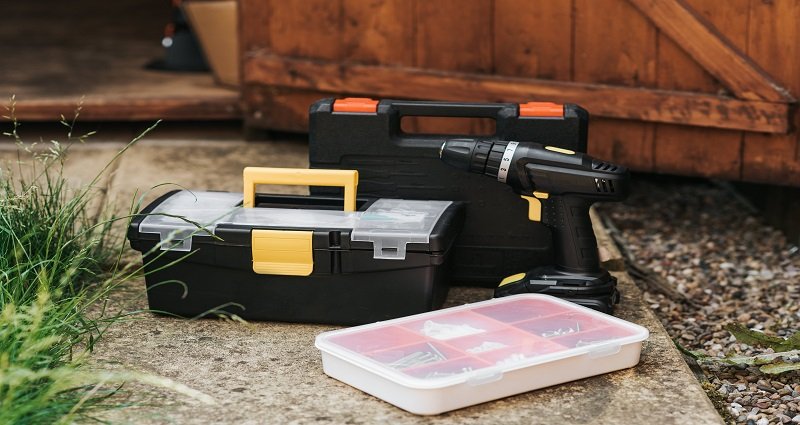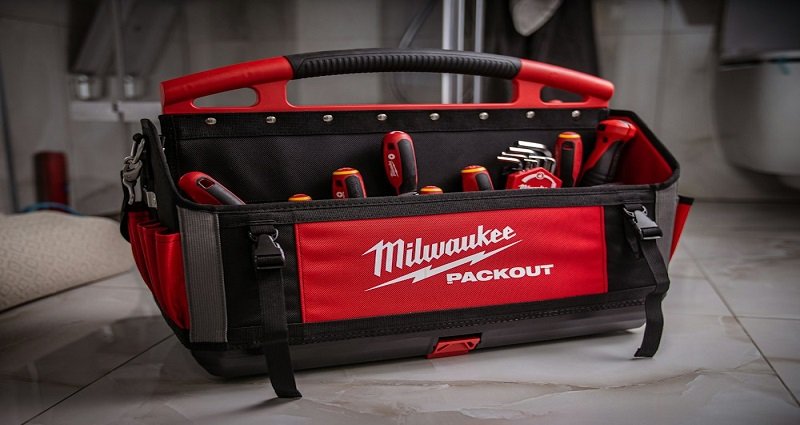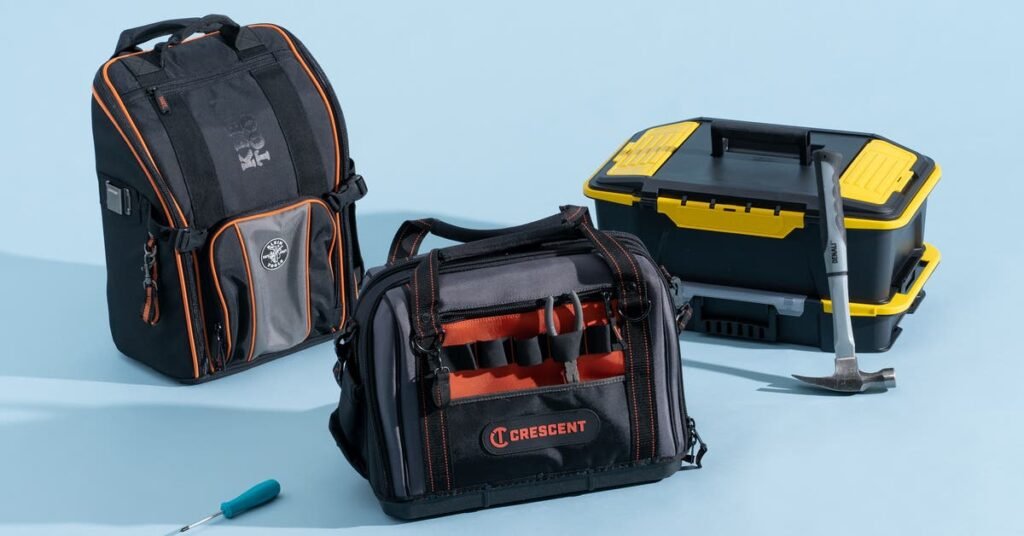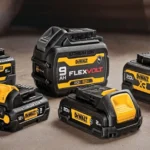The importance of distinguishing between a toolbox and a toolbag lies in understanding their unique characteristics and selecting the most appropriate option for specific needs.
This can help ensure that users have the right tool storage solution for their tasks, whether they require a more organized and stationary storage option (toolbox) or a more portable and versatile option (toolbag).
Choose Right One For You Toolbox vs. Toolbag
In this article, you will learn to choose the right tool storage option to ensure you have the most suitable and efficient solution for your needs.
Tool Box

A toolbox is a box or chest, usually compartmentalized, in which tools are kept. It is designed to store and transport tools, providing a convenient and organized way to access them when needed.
Toolboxes can be made of various materials, such as metal, plastic, or wood, and their size and capacity can vary depending on the user’s needs.
Examples Of Items Typically Found In A Toolbox
- Wrenches
- Screwdrivers
- Hammers
- Pliers
- Tape measures
- Saw blades
- Drill bits
- Screws and nails
- Paintbrushes
- Sandpaper
Significance Of Toolbox In Various Contexts
Toolboxes are essential in various contexts, including:
- Professional Settings: Toolboxes help professionals keep their tools organized and easily accessible, allowing them to complete tasks efficiently and effectively.
- Home Maintenance And Repair: A well-stocked toolbox can help homeowners tackle various repair and maintenance tasks around the house, ensuring that they have the right tools for the job.
- Outdoor Activities And Hobbies: Toolboxes can be used to store and transport tools for outdoor activities, such as gardening, camping, or woodworking, making it easier to work on projects in different locations.
- Emergency Preparedness: A toolbox can be an essential part of an emergency preparedness kit, providing tools and supplies for various situations, such as power outages or natural disasters.
Toolbag

A toolbag is a bag or pouch designed to carry and store tools, often with specialized structures for organizing tools, such as zipper pockets, loops, slots, tape measure holders, hammer holders, saw sleeves, and more.
Toolbags are typically more portable and versatile than toolboxes, making them suitable for various contexts.
Examples Of Items Typically Found In A Toolbag
- Screwdrivers
- Pliers
- Wrenches
- Tape measures
- Spirit levels
- Hammer
- Saw blades
- Drill bits
- Safety goggles
- Work gloves
Significance Of Toolbags In Various Contexts
Toolbags are significant in various contexts, including:
- Portability: Toolbags are designed to be carried around, making them suitable for tasks that require mobility and flexibility.
- Diversity Of Tools: Toolbags offer specialized structures for organizing tools, making it easier to access and find specific tools.
- Professional Settings: Toolbags are suitable for professionals who need to carry their tools around, such as electricians, plumbers, and mechanics.
- Home Maintenance and Repair: Toolbags can be used to store and transport tools for various home maintenance and repair tasks, making it easier to work on projects in different locations.
Differences Between Toolbox Vs. Toolbag
When comparing toolboxes and toolbags, several key differences can be identified, including organization and storage, mobility and transportability, range and variety of tools, as well as accessibility and ease of use.
| Criteria | Toolbox | Toolbag |
| Organization and Storage | Typically offer better organization with drawers and compartments for various tools | Good for lots of small tools and accessories, but may not be the best for larger tools |
| Mobility and Transportability | Less portable and often heavier, may have wheels for easier transport | More portable and lightweight, making them easier to carry around |
| Range and Variety of Tools | Can carry a wide range of tools, including larger and heavier tools | Suitable for diverse tasks, but may be better for smaller tools and accessories |
| Accessibility and Ease of Use | May offer better accessibility and ease of use due to organized compartments | Easier to reach into pouches to retrieve tools, but may not be as suitable for heavy and larger tools |
Suggested Reads: How To Clean A Tool Belt?
The Final Words
In conclusion, both toolboxes and toolbags serve as essential storage solutions for tools, each with their unique characteristics and applications. Toolboxes offer better organization and storage for a wide range of tools, including larger and heavier ones, while toolbags are more portable and versatile, suitable for various contexts.
When selecting the right tool storage option, it is crucial to consider factors such as the range and variety of tools, organization and storage, mobility and transportability, and accessibility and ease of use.
FAQs (Frequently Asked Questions)
Is a tool bag better than a small toolbox?
The choice between a tool bag and a toolbox depends on the user’s specific needs. A tool bag is great for keeping similar items grouped, offering portability and organization, while a small toolbox may be better for those who prefer a more traditional storage solution.
What is the primary purpose of a tool bag?
The primary purpose of a tool bag is to provide a comprehensive set of tools for various tasks, offering convenience and versatility. It serves as a portable workshop in a single package, covering a wide range of tasks.
What are the advantages of a tool bag over a toolbox?
The advantages of a tool bag over a toolbox include portability, lots of storage space, lightweight design, suitability for small tools, and relatively lower cost.
Can I use a tool bag as a standalone solution for all my projects?
While a tool bag offers a wide range of tools, some specialized projects may require additional or specific tools not included in a standard bag. Therefore, for certain specialized tasks, additional or specific tools may be needed.
What are some examples of items typically found in a tool bag?
A typical tool bag includes various hand tools such as screwdrivers, pliers, wrenches, and often power tools like drills. It provides a comprehensive set of tools for a wide range of tasks.

Adam is a tool geek who just loves making and breaking things. Doing the home improvements works and repairing things with his tools is his favorite past time. He loves to keep his tools arranged and sorted. On this blog, he shares his experience and knowledge.








